Cabin air quality continues to be a core focus in the automotive and mobility space—whether for shared or personal vehicles. In the case of shared car services (i.e. rentals, rideshare or carshare), ensuring a “clean” cabin speaks to the customer experience and ultimately overall brand trust. This is especially important as the shared mobility market becomes more crowded.
For personal vehicles, cabin malodors can indicate car system or component issues, like ventilation system fouling or mechanical wear. The impact on the consumer can range from a mere nuisance to an indicator for maintenance.
Digital olfaction offers a solution for objective in-vehicle monitoring of overall olfactive quality to both identify malodors and potential mechanical or system issues, both of which have an impact on overall driver experience.
Challenge
In many cases, the definition of a “clean smelling” vehicle cabin relies on humans to characterize the car smell. While materials testing is often done with trained human panels, cabin olfactive qualification is typically done by untrained noses—such as rideshare operators, rental car detailing technicians or dealership employees. The inherent subjectivity of smell makes this practice prone to wild variations in the range of acceptable total cabin smell.
Digital olfaction offers an objective, consistent way to characterize vehicle air quality and enables service operators or car dealers to validate a car’s odor with an instrument reading. These readings are only useful if we a. know what a clean car should smell like and b. the instrument can provide repeatable, objective results. To do this, we must train the solution to understand the expected odor of a clean car—and perform tests that determine the limit of detection for the device against the human nose.
Solution
Digital olfaction combines biosensors, advanced optics and machine learning to mimic the human sense of smell which can then be used for objective classification and characterization of odors.
To test against a range of expected cabin odors, we used our Standard Digital Olfaction Kit (SDOK) for automotive and introduced smells into an enclosed environment. The tests were performed with the SDOK alone and with our Amplifier device, which allows us to concentrate odors to increase the signal intensity.
When testing these odors, we also captured the odor intensity rating based on a typical human sense of smell scale as seen in Figure 1. The scale shows that in the case of applications for digital olfaction, the ability of the sensor to detect odors below a human smell rating of 3 are the most useful. If a sensor can only detect an odor when it is at a human rating of 5 or 6, then it is less useful for the application.
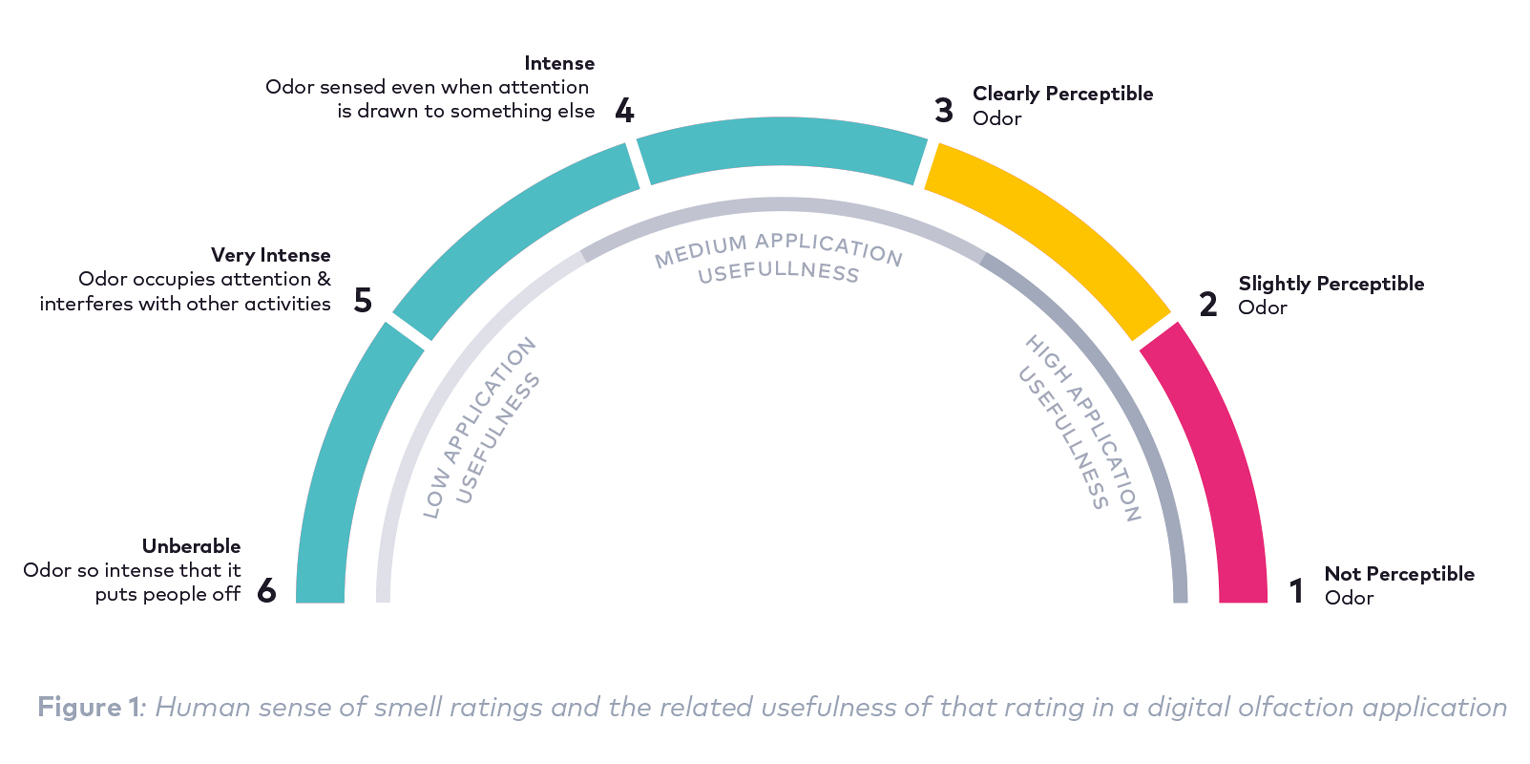
The samples of new car smell and rubber were in a vial. The samples of cigarette odor and cigarette post cleaning were 2 air samples in a bag.
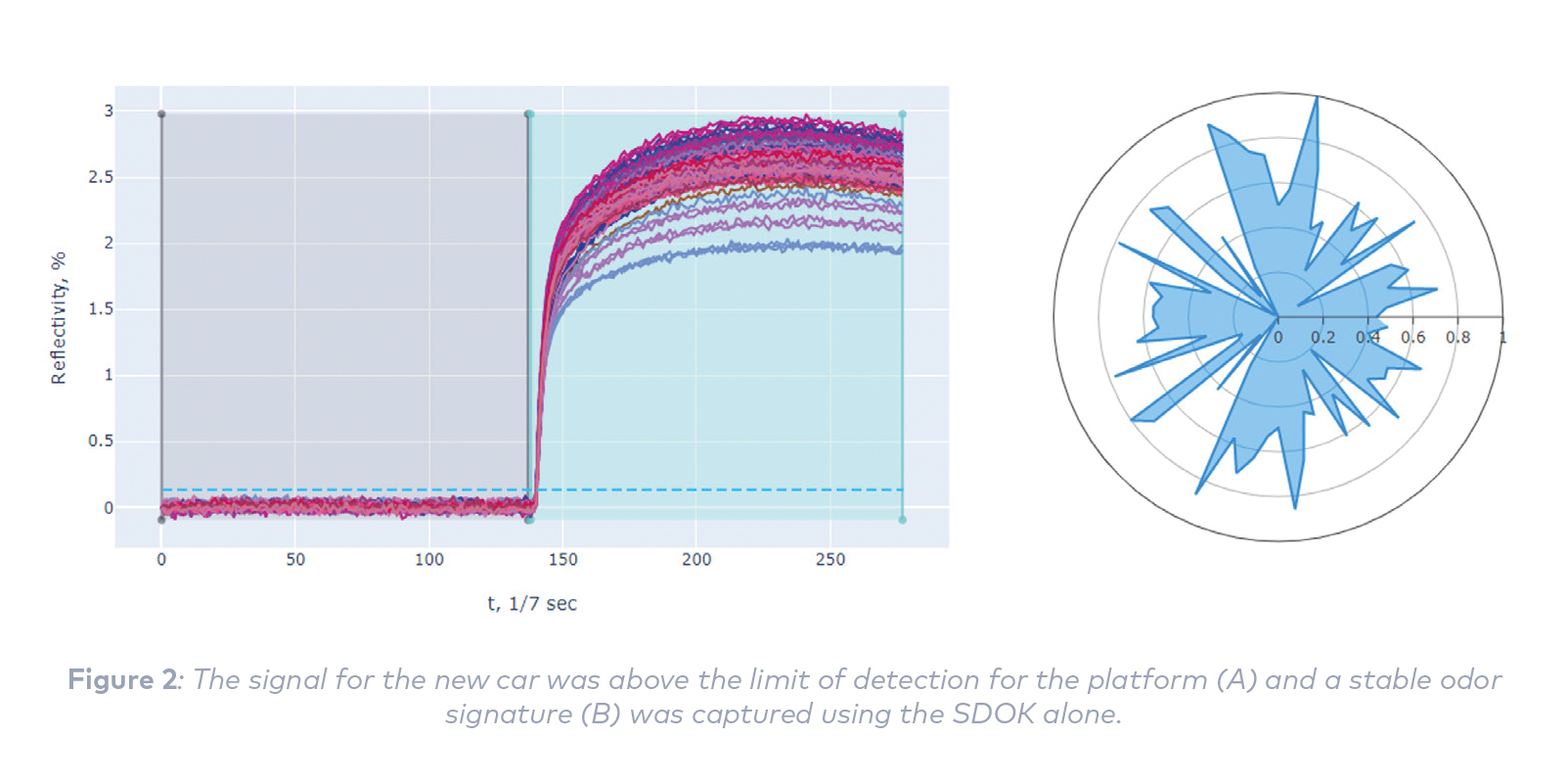
The second tests on rubber showed adequate signal for the SDOK alone and once again we were able to capture a distinct odor signature. However, the overall intensity was lower than the new car smell—as also witness by the human nose rating.
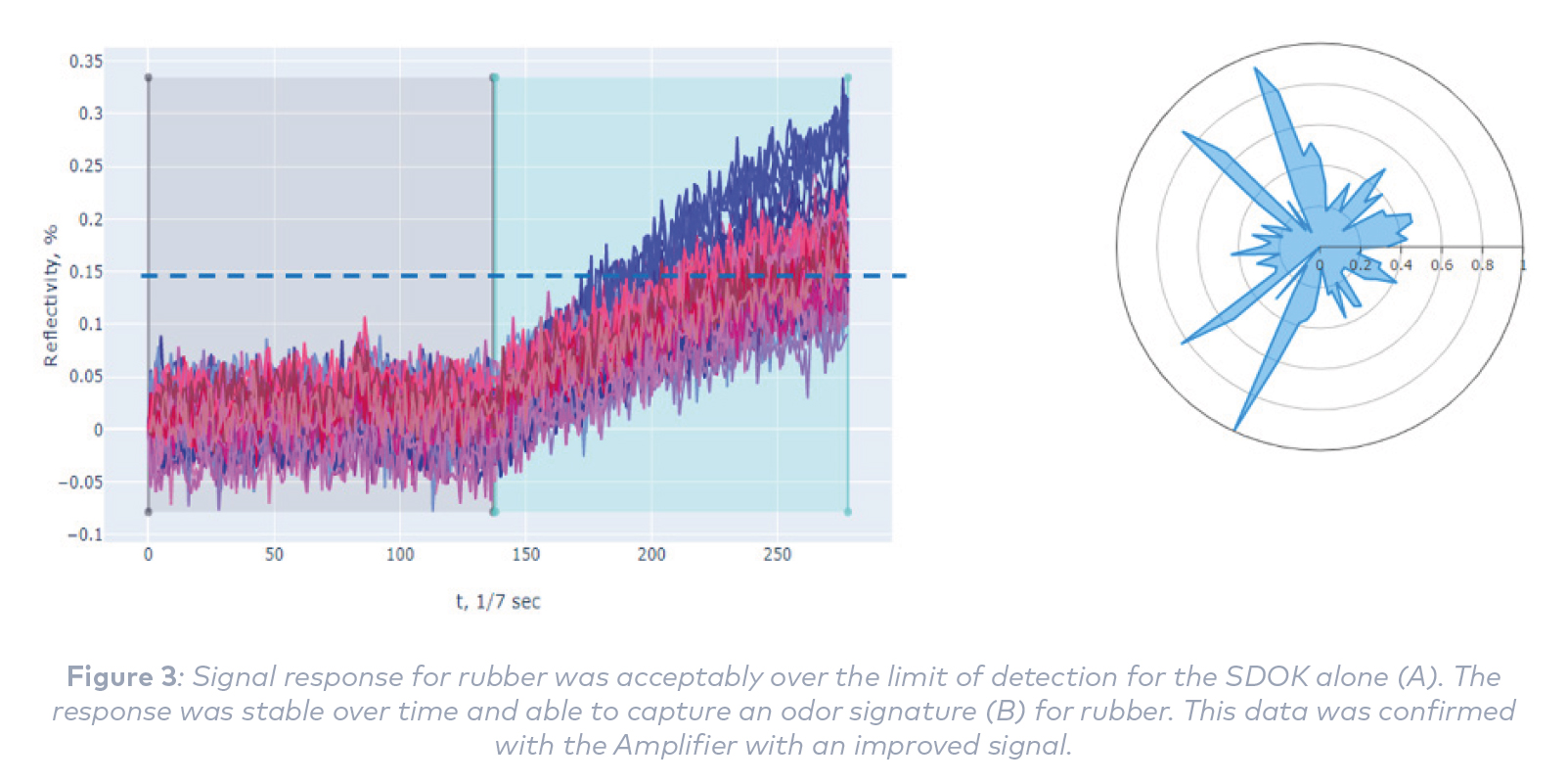
The cigarette odor sample was very close to the limit of detection for the SDOK and required use of the Amplifier to get a signal adequate enough to capture an odor signature, however even after 5 minutes of concentration the signal was still below the limit of detection for the device. The human rating for this particular odor was a 2, so it was only slightly perceptible to the human nose.
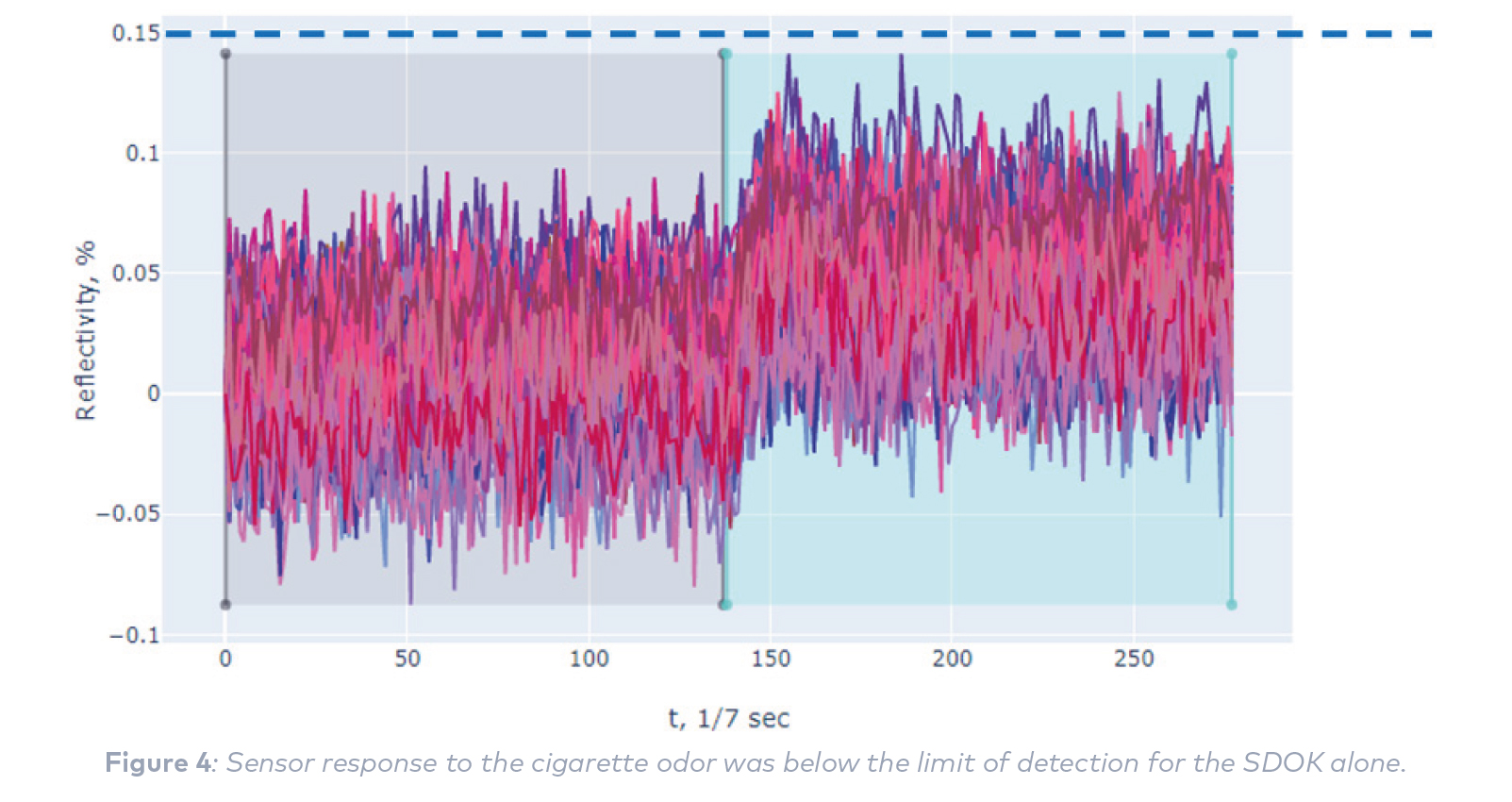
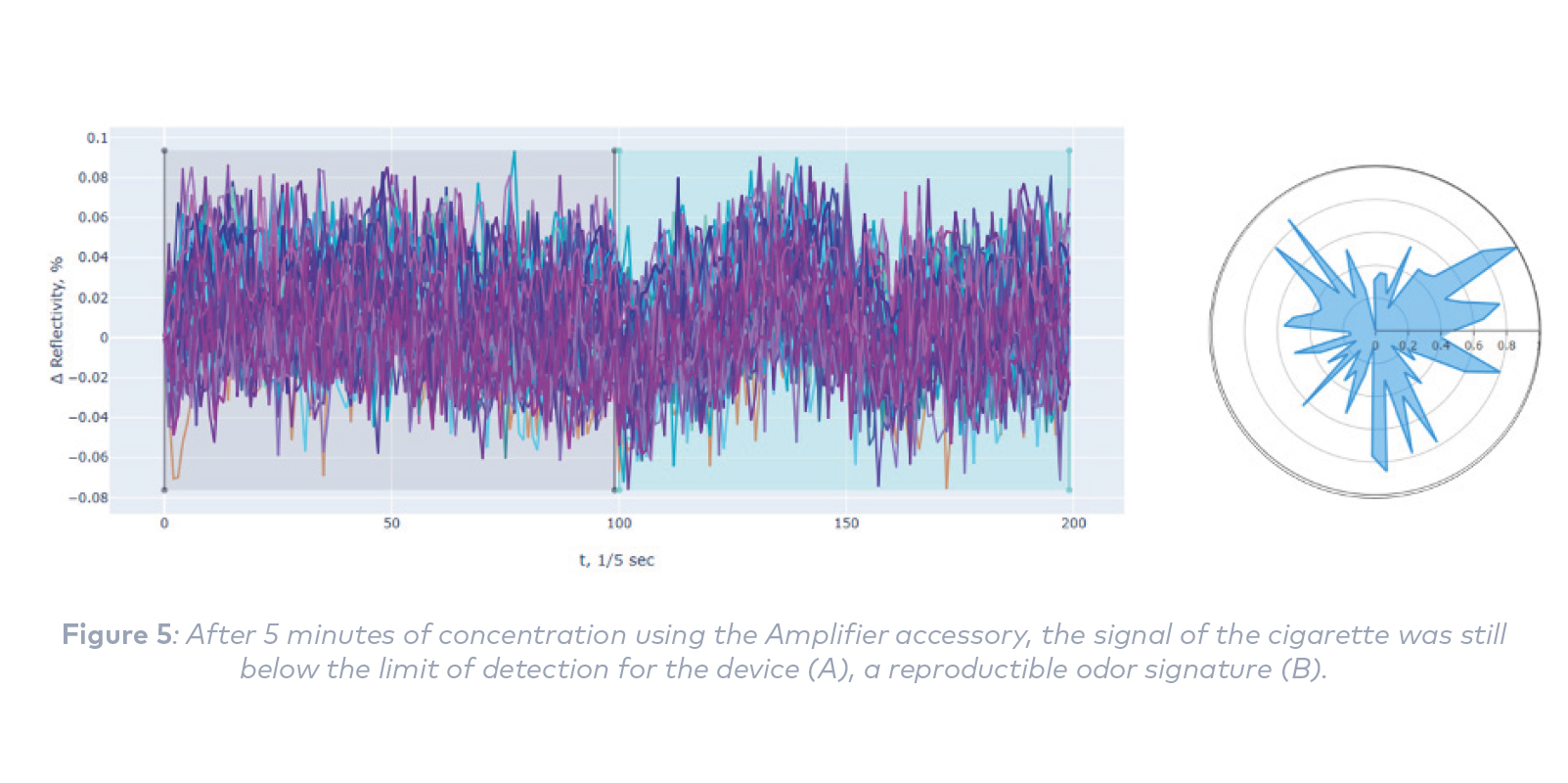
The fourth sample simulated the efficiency of the cleaning process. This sample, labeled “cigarette post cleaning” had no perceptible odor to the human nose and the signal was below the limit of detection for the device both alone and with the Amplifier after 5 minutes of concentration.
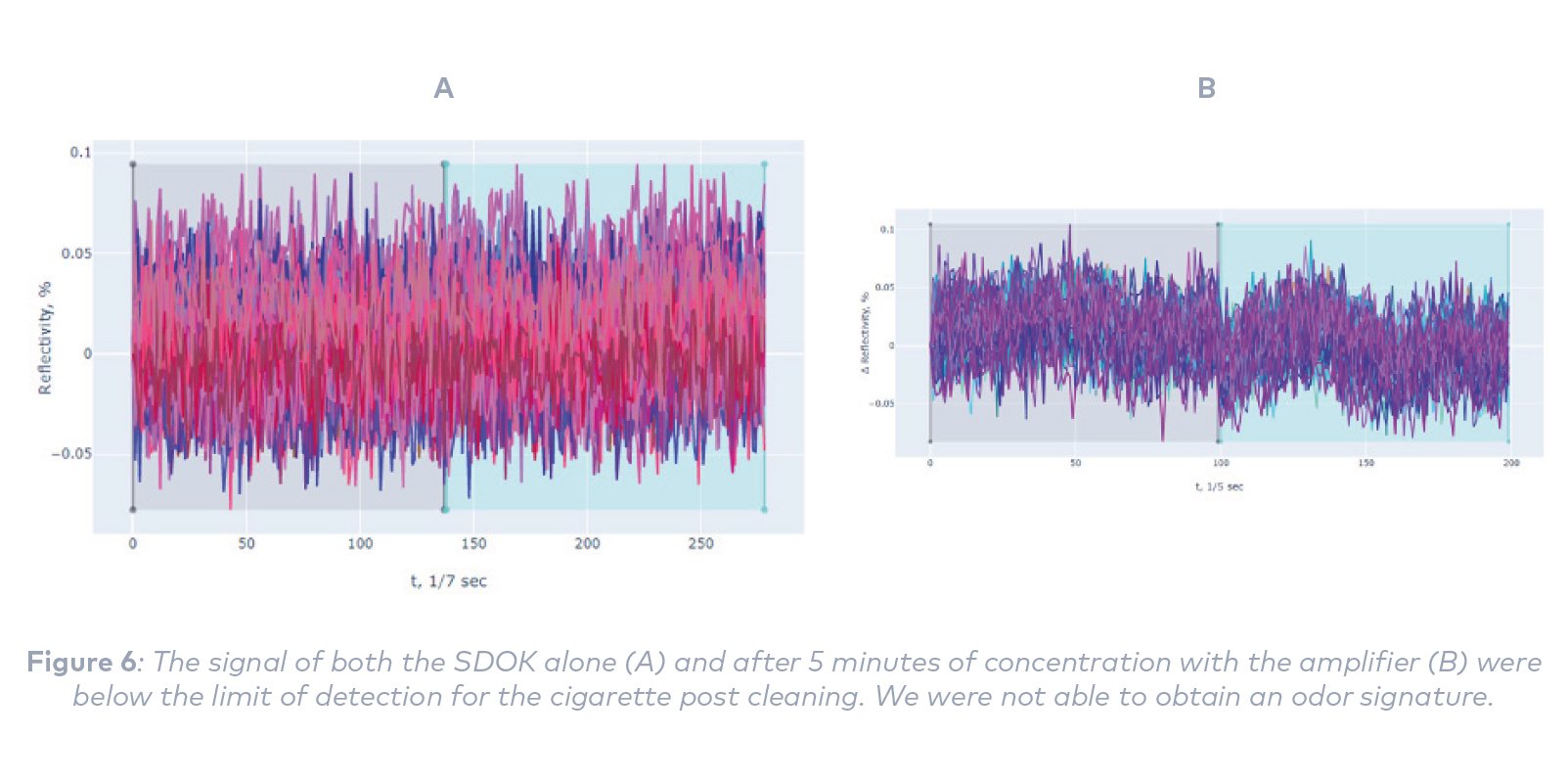
Conclusion
In many of the tests performed, we were able to detect some level of signal with the SDOK device similar to the perceived intensity of the human nose, even without the use of the Amplifier. In most cases, we found that the ability for the device to detect when the human nose saw little to no perception of the odor was low.
In building the use cases for vehicle air quality, the connection between the human perception of cleanliness and the digital olfaction’s ability to detect malodors is extremely important. Further tests need to be performed to establish the link between the human perception threshold and the total digital olfaction solution. However, initial tests on typical odors found in car cabins indicate that the use of an odor concentration device will be critical to establishing these limits.

